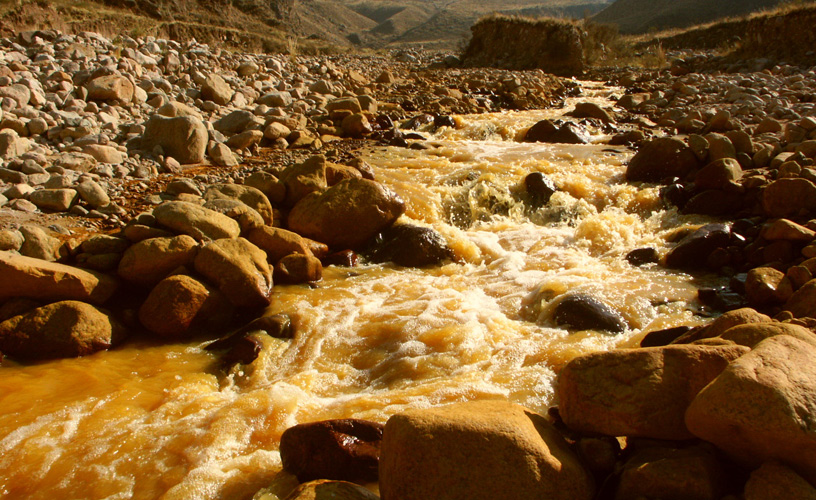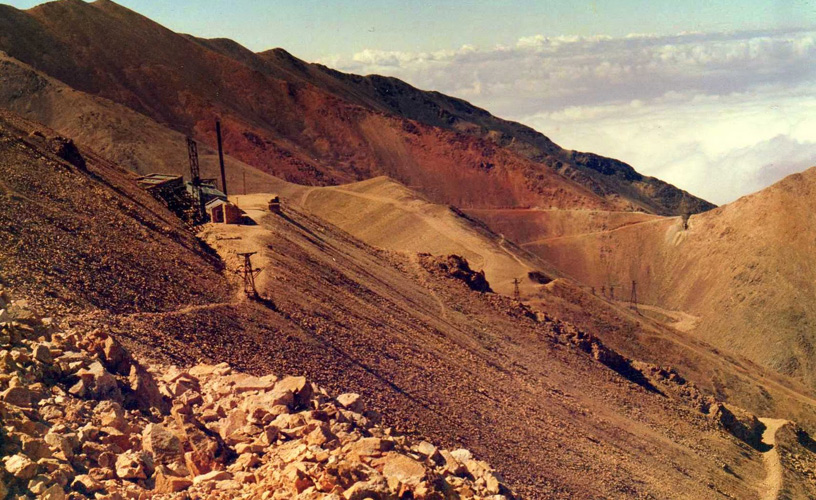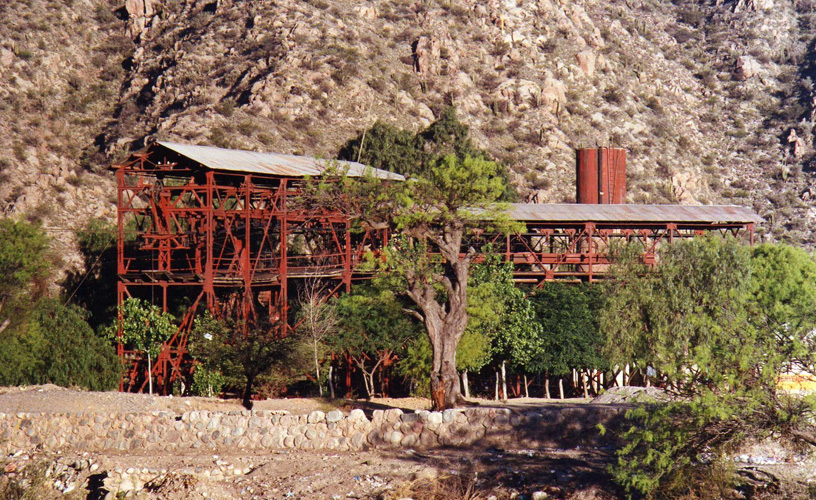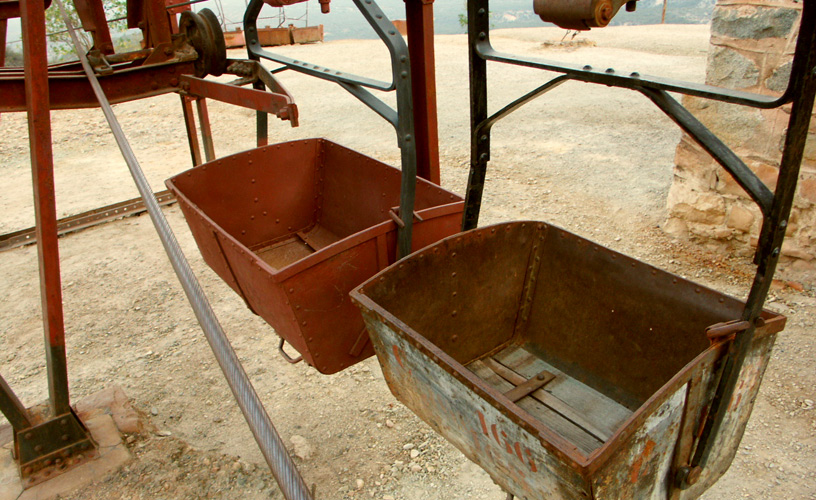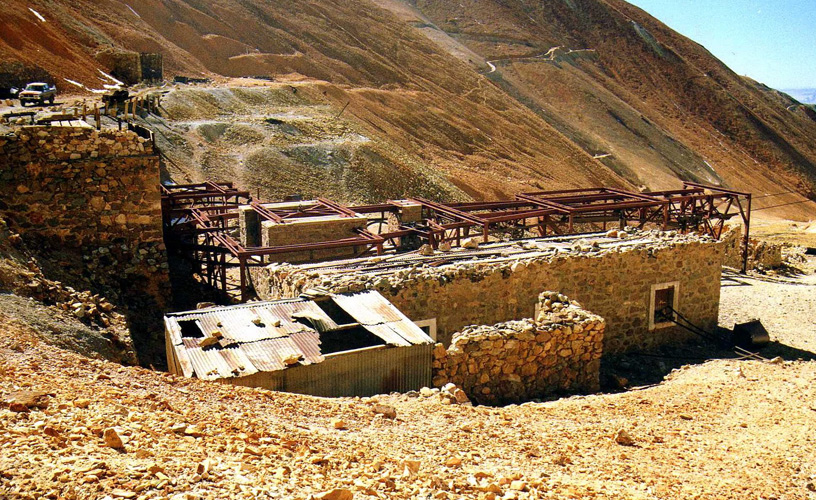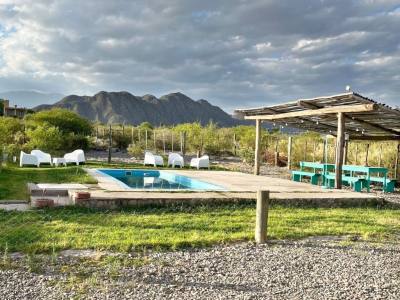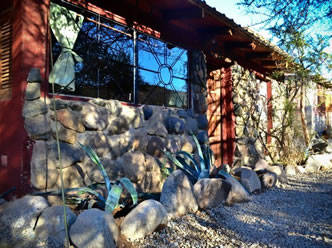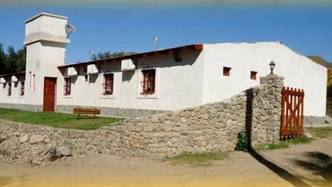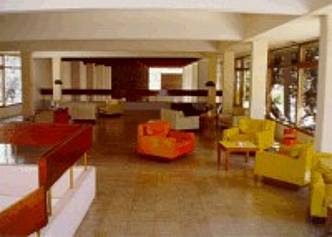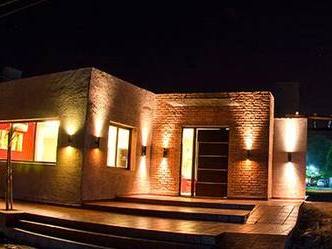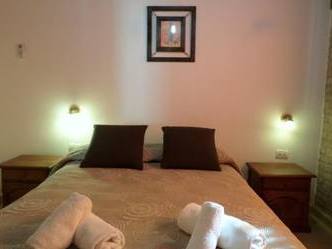The journey takes only half an hour to the spot called Las Talas, a small site located at the bottom of the Famatina mountain range. That is where we start walking. It is seven o’clock in the morning and the sun falls down over the mountains, lighting up the intensely green valley, while the last drops of dew survive on the bushes leaves. At a distance, under a foggy cloak, we make out the first towers of the cable car. In a few minutes we reach the edge of the rivers that form whimsical figures on the large plain valley moistened by recent raindrops. Sunshine reflects in the waters of the Amarillo River, which acquire a bright ocher tinge when going through the narrow passes and caves of the area, very rich in minerals. At this point, it is necessary to cross the river and, so as not to get wet, our guide, Alejo Pihel improvises a footbridge made with rocks tinged in yellow, just like the river. To one side of the path, a limestone hill has changed its color in the last few days and has adopted dark grey shades, due to the humidity of the rain. Our walk continues along a rubble path till we reach a vast plain carpeted with grass, where we decide to have a rest. Lying on our backs in the shade of a huge four-meter-high tree, we discover two superb condors hovering with their open wings, plotting circles in the air till they become a tiny spot in the sky.
La Mexicana mine
When recovering our energy, we resume the walk, by the cable car laying. Over the edge of the hills we can see the huge Eiffel-style braided iron towers, interwoven by steel cables, till they get lost in the bowels of the mountain.
As we ascend, the vegetation gets thicker and thicker, and the plum trees, wickers, acacias, poplars and walnut trees adorn the foot of the mountains. The landscape emanates an orange scent, a mixture of incayuyo and cedrón, which grow all over the area.
At noon, we interrupt the march and, at the foot of a hill, on a small plateau covered with grass, the guide spreads our lunch. Two giant and lonely chestnut trees offer their fruit scattered on the grass. In front, on top of a mountain, we can see the third cable car station -a rusty tin house with a chimney covered with soot, next to an iron tower.
We continue walking after lunch and, as we enter a narrow pass, the sun hides behind a thick cluster of clouds. We are reached by the breeze and the coolness of the rain. Wrapped in our waterproof clothes, we go up and down a path along the edge of the hills. As we turn back, we can see a great valley opening, shielded by giant mountains.
Sandra Bonetto
Marcelo Sola
Contact of the excursion or tour
Dirección de Turismo
Castro y Bazán, Chilecito, La Rioja, Agentina
Phone: +54 3825-422688
